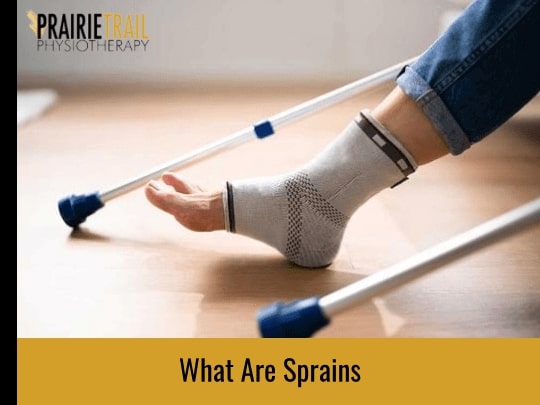A sprain is a common injury caused by the overstretching or tearing of ligaments.
Ligaments are connective tissues that help stabilize your joints. The most common type of sprain occurs at the ankle. However, you can also sprain your knee, wrist, or thumb.
Sprain symptoms include pain, swelling, bruising, and difficulty moving the affected body part. Treatment typically involves rest, ice, compression, and elevation (RICE). In some cases, you may need to wear a splint or brace. Severe sprains might require surgery.
Types of Sprains
The most common type of sprain is an inversion ankle sprain. This occurs when your foot rolls inward when you land on it awkwardly or when you make a sudden stop while running.
A high-ankle sprain happens when the ligaments that connect your shinbone to your foot bone are stretched or torn. This type of sprain is less common but takes longer to heal than other sprains.
A medial collateral ligament (MCL) sprain happens when the ligament on the inside of your knee is stretched or torn. An MCL sprain is commonly caused by a blow to the outside of the knee joint during sports such as football or soccer.
A lateral collateral ligament (LCL) sprain happens when the ligament on the outside of your knee is stretched or torn and is often caused by a blow to the inside of your knee joint during sports such as football or soccer.
Common Causes of Sprains
Though most sprains heal with time and rest, they are painful and often cause joint instability. There are many different causes of sprains, but some of the most common include:
Poor conditioning: Weak muscles and ligaments are more susceptible to injury, so it’s important to maintain a good level of fitness. People who have sedentary lifestyles or who have recently started a new exercise program are at greater risk for developing a sprain.
Inadequate warm-up: Cold muscles are more likely to be injured than warm ones. Spending at least 5 minutes stretching and warming up before participating in any physical activity is important.
Footwear: Wearing shoes that don’t fit well or provide enough support can increase your risk of developing a sprain. This is especially true for athletes who participate in high-impact activities like running or basketball.
Age: Our bones and ligaments degenerate as we age, making us more susceptible to injury. This is why sprains are more common in older adults. Older adults also take longer to recover from a sprain due to reduced blood flow and slower healing times.
If you think you may have sprained your ankle or knee, it’s important to see a doctor immediately. Early diagnosis and treatment can help speed up healing and reduce your risk of developing long-term joint problems.
How are Sprains Treated?
The best treatment for a sprain is the acronym RICE.
- Rest: Avoid activities that cause pain, swelling, or discomfort.
- Ice: Apply ice for 20 minutes, several times daily, to reduce swelling and pain.
- Compression: Use an elastic bandage or compression sock to help reduce swelling.
- Elevation: Keep your injured joint above the level of your heart to help reduce swelling.
Painkillers can also be prescribed if you’ve gone with the RICE mentioned above and are still experiencing pain.
Conclusion
It could be a sprain if you have injured yourself and are experiencing pain, swelling, bruising, and difficulty moving the affected body part.
A sprain is a common injury caused by overstretching or tearing of ligaments due to landing awkwardly on a joint or suddenly stopping while running. The most common type of sprain occurs at the ankle, but you can also sprain your knee, wrist, or thumb.
The best treatment for a sprain is RICE – rest, ice, compression, and elevation – which will help reduce swelling and pain. You might sometimes need surgery to repair torn ligaments, but most sprains will heal within 6-8 weeks with proper care.

